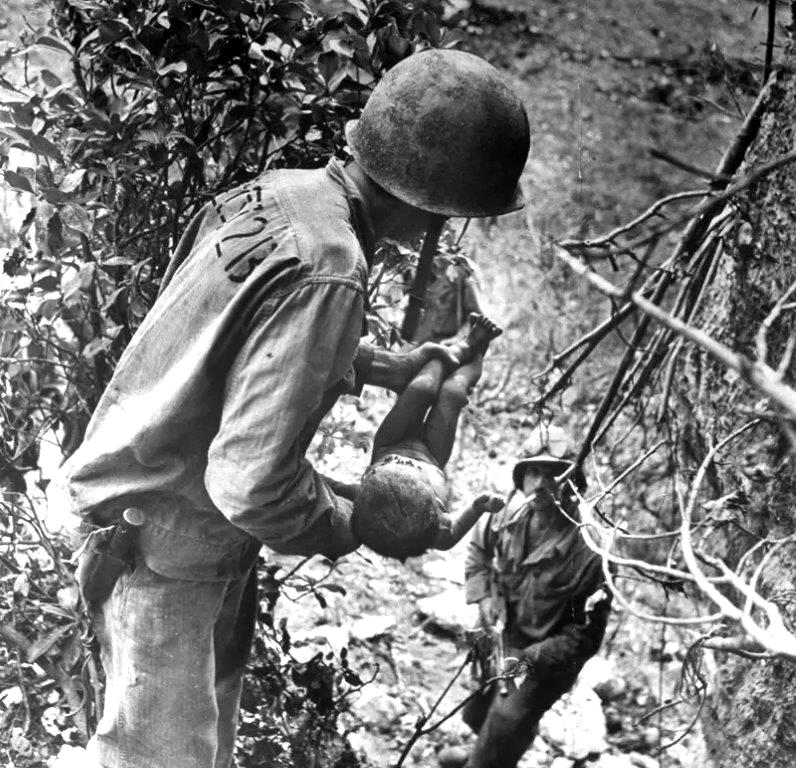
Figure 1.--This U.S. Marine is cradaling a baby that is barely alive. He was found face down in a cave where Japoanese civilians were hiding. He looks to be if not a new born inlky a few weeks old. We do not know what happened to his mother. |

|
The Japanese military exerted a great effort to build defensive military emplacements and bunkers to defend the island. No effort was made to provide shelters for the civilans. When the pre-invasion shelling began, civilians began moving inland.. Some began moving morth as the battle developed. This was problematic as movement in the open became fangerous as the battle deveopment. Civilians began seeking out caves, the only real safe place to be. Many civilians owe their life to Saipan's craggy, precipitous terrain. The terraine also oresented American forces with a tactical nightmare. The ravines, caves, cliffs and hills acquired nicknames such as Hell's Pocket, Death Valley and Purple Heart Ridge. The caves offered safety for civilians, but as the Japanese soldiers also set up emplacements in the trough terraine, the Americans were often confused as to who was who in the caves. And as the battle lasted nearly a month, those who found caves soon began running out of food and water. The problen for many families was that even if they wanted to surrender to the Americans, it was not easy. Trying to surrender at night was a virtual death sentence as both Japanese and American soldiers fired at anything that moved at night. And during the day the civilians faced a crossfire. American fire power made movement difficult. The Americans often could not distinguish between soldiers and civilians when approaching caves or in jungke areas. Adding to the problem, Japanese troops often used civilians as decoys to ambush American soldiers. Only if they were identified as civilians were they safe. And the Japanese soldiers routinrly killed anyionr trying to surrender, both the Chomoros and the Japnese civiklans. Escolastica Tudela Cabrera remembers when Japanese soldiers arrived 'at our cave with their big swords and said if anybody went to the Americans, they would cut our throats.' [Cabrera in Petty, pp. 19-20.]
Petty, Bruce M. Saipan: Oral Histories .
Navigate the CIH World War II Section:
[Return to Main getting the civilans to safety page ]
[Return to Main Saipan invasion civilian page ]
[Return to Main World War II: Marianas page]
[Return to Main World War II Pacific campaign page]
[About Us]
[Aftermath]
[Biographies]
[Campaigns]
[Children]
[Countries]
[Deciding factors]
[Diplomacy]
[Geo-political crisis]
[Economics]
[Home front]
[Intelligence]
[POWs]
[Resistance]
[Race]
[Refugees]
[Technology]
[Totalitarian powers]
[Bibliographies]
[Contributions]
[FAQs]
[Images]
[Links]
[Registration]
[Tools]
[Return to Main World War II page]
[Return to Main war essay page]
[Return to CIH Home page]
